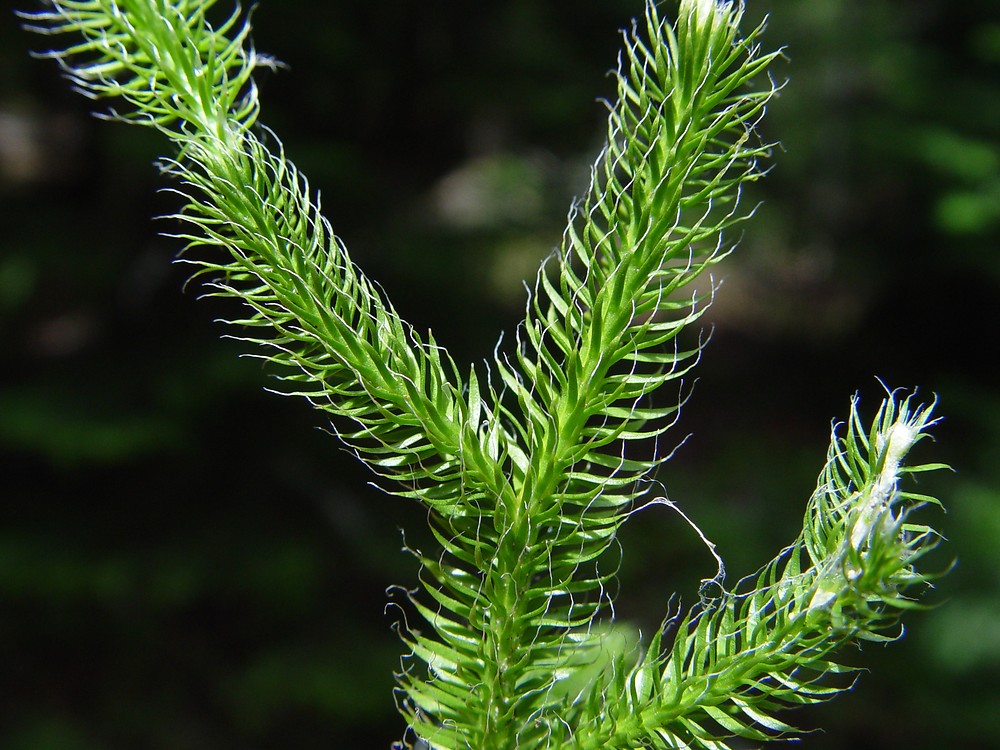Common Names: Wolf's-foot, Clubmoss, Stag's-horn Clubmoss, Groundpine
Family: Lycopodiaceae
Parts Used: Spores, Herb (with care)
Active Compounds: Lycopodin, Clavatin, Clavotoxin, fatty oil, glycerin, organic acids, palmitin, stearin, arachin, citric acid, malic acid
Description
Lycopodium clavatum is a spore-bearing vascular plant found growing prostrate along the ground, with long creeping stems up to 1 meter. These stems are highly branched, densely covered with small, spirally arranged leaves ending in fine, white, hair-like tips.
Its distinctive spore cones, yellow-green when young and pale buff when ripe, rise erect on long stalks reaching 5–15 cm in height. This plant thrives in mountain regions, forests, and meadows, often resembling tiny conifer seedlings.
Key Identification Features:
-
Much-branched stems creeping along the ground.
-
Leaves with flexible, white hair-like tips.
-
Pale green to pale buff spore cones in groups of 1–3.
-
Creeping stems that root along their length.
Habitat and Harvesting
Clubmoss is typically found in mountainous woodlands and meadows. The spores are harvested in August and September, when the cones mature.
Medicinal Uses
Spores:
-
Skin Ailments: Effective as a dusting powder for weeping rashes, baby skin inflammation, and wounds.
-
Urinary and Metabolic Disorders: Acts as a diuretic and is used for cystitis, bladder stones, and gout.
-
Digestive Complaints: Beneficial for sluggish digestion, liver congestion, and metabolism stimulation.
Herb (with Care):
-
Supports treatment of inflammations of the sexual organs, chronic skin rashes, kidney gravel, and colic.
-
Traditionally favored in conditions of gradual functional decline, such as weakened digestion, poor nutrient absorption, and metabolic disorders.
Characteristic Applications in Natural Medicine
Lycopodium is especially suited for:
-
Individuals with slow-developing, deep-seated, chronic illnesses, often worsened in the late afternoon (4–8 pm).
-
Urinary and digestive disturbances, like red sandy sediment in urine, backache, bloating, and intolerance to cold drinks.
-
Nervous and intellectual individuals with poor muscular strength and cold extremities.
-
Those suffering from gout, rheumatism, malnutrition, liver ailments, and chronic indigestion.
Notable Traits:
-
Symptoms often appear on the right side first, moving to the left.
-
Sensitive to odors, noise, and emotional disturbances.
-
Prone to dry, withered skin and poor circulation.
-
Common in both the elderly and precociously weak children.
Use in Electropathy (E.H.)
In Electropathy, Lycopodium Clavatum has shown excellent results and is incorporated into Scrofoloso No.-2 due to its therapeutic effects on metabolic, glandular, and chronic disorders




